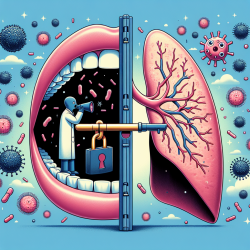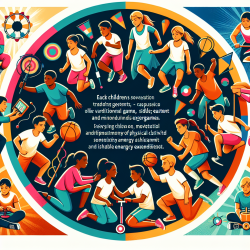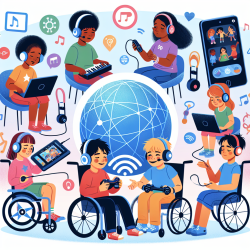In the pursuit of enhancing therapeutic outcomes for children with unilateral cerebral palsy (UCP), practitioners can benefit greatly from integrating findings from recent research on non-invasive brain stimulation (NIBS). The study titled "Non-Invasive Brain Stimulation in Children With Unilateral Cerebral Palsy: A Protocol and Risk Mitigation Guide" provides a comprehensive framework for safely implementing NIBS, specifically tailored for pediatric populations.
NIBS techniques, such as transcranial magnetic stimulation (TMS) and transcranial direct current stimulation (tDCS), have shown promise in influencing cortical excitability and promoting motor recovery. However, the pediatric application of these techniques requires careful consideration of developmental variability and safety protocols.
Key Findings and Recommendations
The study emphasizes the importance of individualized dosing and protocols for children, as adult protocols may not be appropriate. Key components include:
- Detailed assessment of the child's medical history, focusing on seizure history, syncope, and cognitive status.
- Use of specific protocols for managing serious adverse events (SAEs) like seizures and syncope.
- Mitigation strategies for minor adverse events (MAEs) such as headaches, dizziness, and scalp irritation.
- Implementation of a thorough screening process to identify contraindications like indwelling metal or incompatible medical devices.
Practical Application for Practitioners
Practitioners are encouraged to adopt the following steps to integrate NIBS into their therapeutic practices safely:
- Conduct comprehensive medical history assessments to identify potential risks.
- Implement safety protocols and mitigation strategies as outlined in the study.
- Utilize age-appropriate language and tools for informed consent and assent.
- Monitor and document any adverse events meticulously to refine protocols continually.
Encouraging Further Research
While the current study provides a robust framework, ongoing research is essential to optimize NIBS applications further. Practitioners are encouraged to contribute to this growing body of knowledge by conducting well-documented clinical trials and sharing their findings.
By adopting these practices, we can collectively enhance the therapeutic outcomes for children with UCP, paving the way for more effective and safe interventions.
To read the original research paper, please follow this link: Non-Invasive Brain Stimulation in Children With Unilateral Cerebral Palsy: A Protocol and Risk Mitigation Guide.










